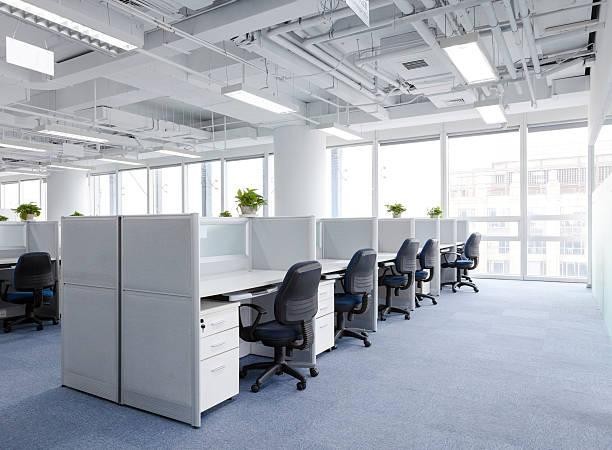Introduction to Office Cubicle
The world of office environments, the cubicle has held a central role for decades. It represents more than just a workstation; it embodies a complex interplay of design, functionality, and workplace culture. The history and evolution of the office cubicle reflect broader societal changes and shifting attitudes towards work and productivity. From its inception to its modern adaptations, the cubicle has seen both praise and criticism, serving as a canvas upon which ideas about privacy, collaboration, and well-being are painted.
The Birth of the Cubicle
The concept of the cubicle emerged in the late 1960s as a response to the need for efficient space utilization in burgeoning office environments. Designed by Robert Propst for the Herman Miller furniture company, the Action Office system was introduced in 1964. This system aimed to provide a flexible, modular alternative to traditional open-plan offices by incorporating movable panels that could define individual workspaces. The original intent was to enhance worker autonomy and productivity.
However, as the concept evolved, it morphed into what we now recognize as the cubicle—a semi-enclosed workstation bounded by partitions. The design promised a balance between privacy and openness, allowing for concentration while still fostering a sense of belonging within a larger office ecosystem.
The Rise of the Cube Farm
By the 1980s and 1990s, the cubicle had become synonymous with corporate offices, leading to the rise of the "cube farm." Rows upon rows of uniform cubicles filled office landscapes, shaping a distinct visual identity for the modern workplace. This era saw the cubicle not only as a spatial solution but also as a tool for management to monitor and control employee behavior.
The cubicle's popularity was driven by its cost-effectiveness and scalability. Companies could maximize floor space and accommodate growing workforces efficiently. However, criticisms soon emerged about its impact on worker morale and creativity. Critics argued that cubicles stifled collaboration, promoted isolation, and contributed to a lack of personalization in the workplace.
Redefining Workspaces
In response to these criticisms, the early 2000s witnessed a shift in office design philosophy. Tech giants like Google and Facebook pioneered open-plan layouts that aimed to promote collaboration and flexibility. The cubicle's rigid partitions gave way to expansive, communal work areas, complete with lounge spaces, standing desks, and "hot-desking" arrangements.
This shift reflected changing attitudes towards work culture, emphasizing the importance of interaction and idea-sharing. However, the pendulum soon swung back towards a more nuanced approach, as companies recognized the need to balance collaborative spaces with areas that offered privacy and focus.
The Modern Cubicle: A Hybrid Approach
Today, the cubicle has evolved into a hybrid form that combines elements of privacy and collaboration. Designers and architects are reimagining the traditional cubicle, incorporating features that prioritize employee well-being and adaptability. Modern cubicles are characterized by:
- Flexibility: Modular cubicle systems that can be easily reconfigured to accommodate changing team dynamics and project needs.
- Biophilic Design: Integration of natural elements like plants and natural light to enhance productivity and reduce stress.
- Personalization: Customizable workstations that allow employees to personalize their space, fostering a sense of ownership and comfort.
- Technology Integration: Seamless integration of technology, including ergonomic furniture and advanced connectivity options.
The Psychological Impact
Beyond its physical attributes, the cubicle has a profound psychological impact on employees. Privacy, a key feature of cubicles, can enhance focus and concentration, especially for tasks that require deep cognitive engagement. However, excessive isolation can lead to feelings of disconnection and alienation.
Effective cubicle design considers these psychological factors, aiming to strike a delicate balance between solitude and social interaction. Modern workplaces recognize that employees thrive in environments that offer choice—a blend of private spaces for focused work and communal areas for collaboration.
The Future of Workspaces
Looking ahead, the modern office cubicle continues to evolve in response to emerging trends such as remote work and hybrid models. Flexible workspaces that prioritize mobility and well-being are likely to dominate. The cubicle, once a symbol of corporate conformity, has transformed into a versatile tool that adapts to the needs of a dynamic workforce.
Conclusion
The office cubicle has journeyed far beyond its humble beginnings as a space-saving solution. Its evolution reflects broader shifts in workplace culture and design philosophy. As we navigate the future of work, the cubicle remains a canvas upon which we project our aspirations for productivity, collaboration, and individual well-being. Its story is intertwined with our own, revealing how our values and expectations shape the spaces where we work and create.
